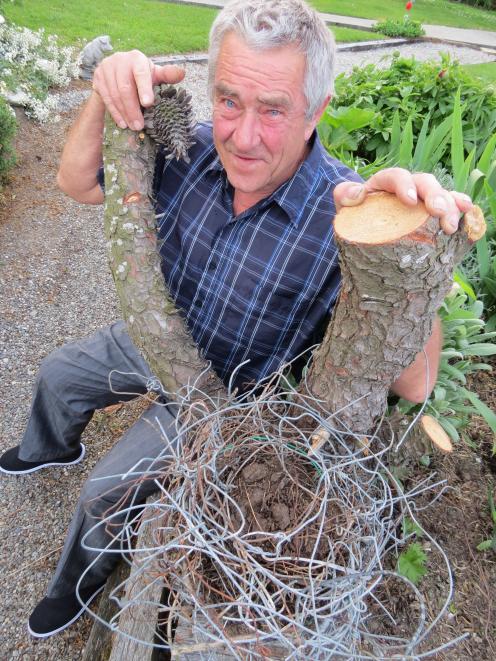
After cutting down a huge 25m-high ''grandad'' tree on a farm near Millers Flat last week, Owen Blanch, of Roxburgh, discovered a large magpie nest in the crown.
What made the nest so unusual was it was made almost entirely of farming wire of various gauges, from haybale wire (baling wire) to No 8 wire.
Mr Blanch said generations of birds had also used bits of deer fencing, a gate latch made from wire, a white pull cord coloured green with age and clear plastic piping.
The birds had wrapped wire as supports around the branches and the tree, which he thought might have been planted around World War 1 or in the 1920s, had grown over it.
''That morning I was watching a David Attenborough programme and he was talking about a magpie nest made of wire,'' he said.
''That same afternoon I took the tree down and the nest was sitting in the crown.
''I had never seen one before.''
In the early days of farming, baling wire was used to hold hay bales together and after being cut, would often be discarded.
''My guesstimate is the nest is about 80 or 90 years old.''
The interior of the nest was filled with pine needles and other vegetation and either dirt or cow manure.
He was going to give the nest to the Teviot Museum in Roxburgh, he said.
''It is a unique thing.''
He said sometimes farmers would leave hay wire on the ground and it would get caught up in the axles of farm machinery, which was one origin of the phrase ''haywire''.
Hayes Engineering Works and Homestead tour guide and manager Ken Gillespie, of Oturehua, said he was not surprised to hear of a magpie nest made of wire, although they were extremely unusual.
''Magpies are notorious for picking up anything shiny.''
In those days, No8 wire was made of iron rather than steel so was a lower tensile and easier for birds to bend.
Baling wire was also extremely hard on hands.
''Baling wire was used up to the 1940s around New Zealand, at a guess.''
Contractors who felled trees planted near farmhouses were alway wary as they often found all sorts of things in them, taken there by magpies.













